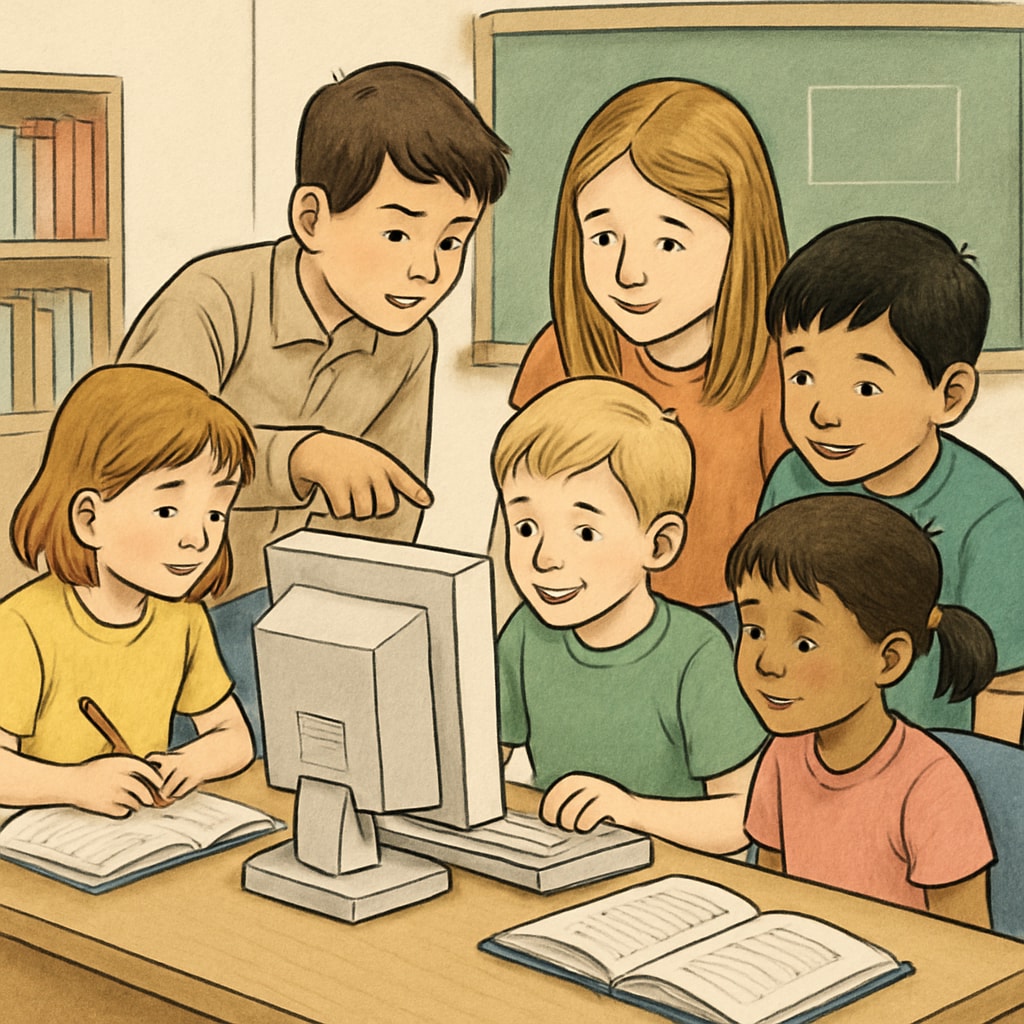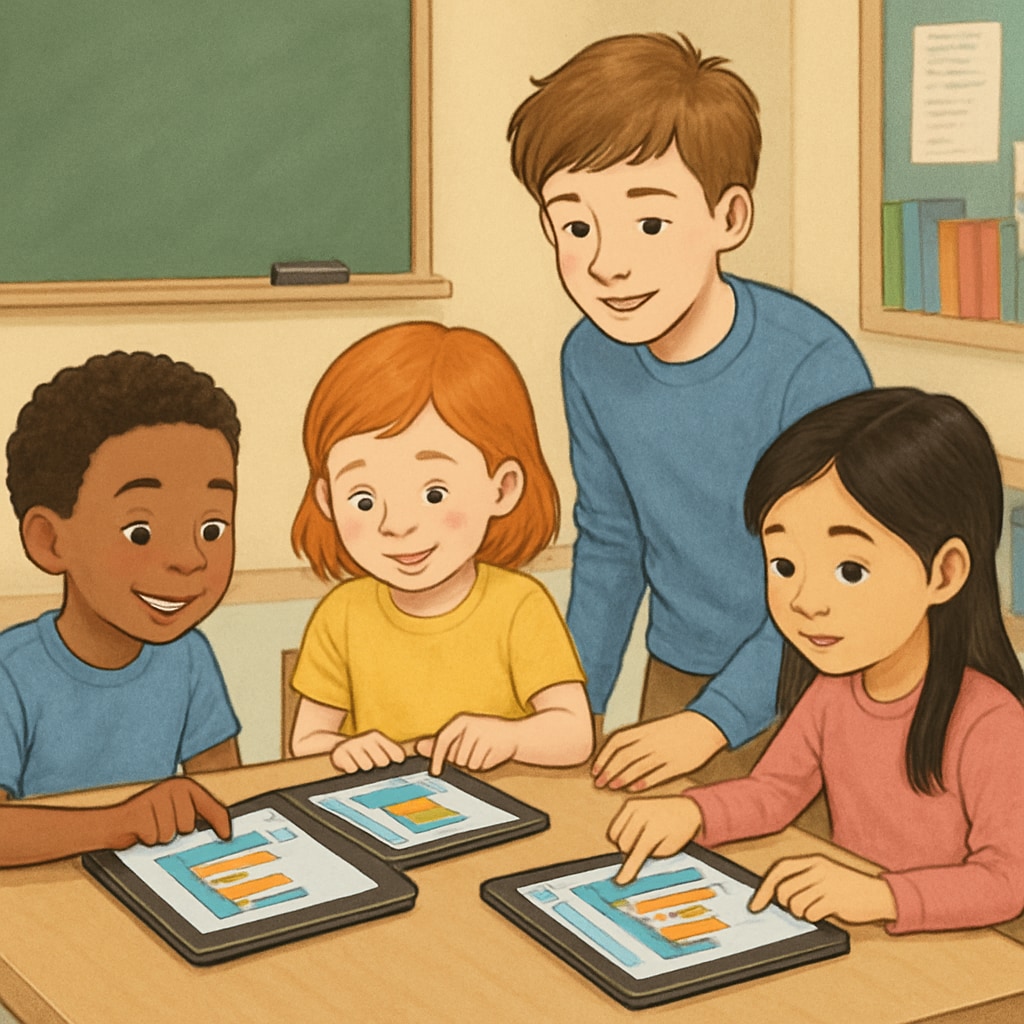Partner projects between kindergartners and fourth graders offer a unique opportunity to explore cross-age collaboration. By combining the curiosity and creativity of younger children with the leadership and problem-solving skills of older students, these activities create a mutually enriching educational experience. Structured computer activities, a cornerstone of modern learning, open exciting paths for both age groups to engage and grow together.
Why Cross-Age Collaboration Works
Cross-age collaboration fosters mutual respect, empathy, and teamwork. Younger students benefit from the guidance of older peers, while fourth graders gain confidence and leadership skills. Research shows that such partnerships enhance learning outcomes by promoting social-emotional development and academic growth (Peer Learning on Britannica). In addition, the structured nature of these activities helps bridge the developmental gap between the two age groups.

Innovative Activities for Partner Projects
To create meaningful cross-age experiences, educators can implement activities that balance simplicity for kindergartners with challenge for fourth graders. Here are eight ideas:
- Storytelling Workshops: Fourth graders help kindergartners compose and illustrate simple stories.
- Art Collaborations: Older students assist younger peers in creating mixed-media art projects.
- Outdoor Exploration: Pairs explore nature together, with fourth graders guiding kindergartners through scavenger hunts.
- Structured Computer Tasks: Activities like coding games and educational apps encourage teamwork while introducing technology.
- Science Experiments: Fourth graders lead hands-on experiments suitable for younger children.
- Music and Movement: Group performances allow both age groups to rehearse and perform together.
- Reading Circles: Fourth graders read aloud while kindergartners follow along, fostering literacy skills.
- Community Service Projects: Pairs work together on small acts of kindness, such as creating cards for local charities.
Implementing Structured Computer Activities
Computer-based activities are particularly effective in bridging the gap between kindergartners and fourth graders. These tasks allow for customization based on each group’s learning level while promoting digital literacy. For example:
- Interactive Coding Games: Platforms like ScratchJr offer simple programming challenges that both age groups can enjoy.
- Digital Story Creation: Tools such as Book Creator allow pairs to design and narrate stories together.
- Educational Apps: Apps like Khan Academy Kids provide collaborative puzzles and problem-solving tasks.
Educators should ensure adequate supervision and guidance, particularly for kindergartners, to maintain focus and prevent frustration. By involving fourth graders as mentors, these activities become a valuable learning experience for both groups.

Tips for Success
To maximize the benefits of cross-age projects, consider the following strategies:
- Pair Thoughtfully: Match students based on personalities and skill levels to foster positive interactions.
- Set Clear Goals: Define objectives for each activity to ensure alignment with educational standards.
- Provide Training: Equip fourth graders with mentoring skills to support kindergartners effectively.
- Encourage Reflection: Allow students to share their experiences and insights after each activity.
For further information on cross-age mentorship, see Cross-Age Peer Tutoring on Wikipedia.
Conclusion
Cross-age collaboration through partner projects creates an enriching platform for mutual learning and growth. From structured computer tasks to creative storytelling, these activities empower kindergartners and fourth graders to connect, learn, and thrive together. By implementing thoughtful strategies, educators can unlock the full potential of these unique partnerships, fostering skills that extend far beyond the classroom.


